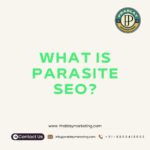Navigating the ever-evolving world of SEO can feel like walking a tightrope. With search engines constantly updating their algorithms and user preferences shifting, finding that perfect balance is crucial. To succeed online, you need to juggle various elements — from keyword optimization to technical SEO, and from on-page strategies to off-page tactics. It’s not just about getting your website noticed; it’s about crafting an experience that resonates with users while satisfying the demands of search engines.
As you delve deeper into this intricate dance between visibility and user engagement, understanding these essential balances will help refine your SEO strategy. Whether you’re aiming for short-term wins or laying down a strong foundation for long-term success, each aspect plays its role in elevating your site’s performance. Let’s explore what needs balancing in the quest for digital excellence!
Keyword Optimization vs. Matching Searcher Intent
Keyword optimization is often the cornerstone of any SEO strategy. It involves selecting the right keywords and phrases that potential visitors might use to find your content. Through meta titles, descriptions, and internal links, you can enhance visibility in search engines.
However, simply stuffing keywords into your content isn’t enough anymore. Matching searcher intent has become equally important. Understanding what users are genuinely looking for allows you to create content that resonates with their needs.
Imagine someone searching for “best coffee makers”. They might be looking for reviews, purchasing guides, or even comparisons between products. If your article doesn’t align with their specific intent—whether it’s informational or transactional—you could lose valuable traffic.
Balancing these two elements means not only optimizing for keywords but also crafting engaging material that answers user queries effectively. This dual approach leads to higher engagement rates and better rankings over time.
Technical SEO vs. Content Optimization
Technical SEO lays the groundwork for a website’s performance. It’s all about ensuring that search engines can crawl, index, and understand your site efficiently. This involves optimizing meta titles, improving site speed, and implementing structured data.
Content optimization takes over once the technical aspects are in place. It focuses on creating high-quality content that resonates with users while incorporating relevant keywords strategically. Engaging articles and well-crafted meta descriptions draw visitors in.
Both elements must work hand-in-hand to achieve optimal results. If technical issues hinder accessibility, even the best content may not reach its audience. Conversely, without valuable content, a technically sound site lacks purpose.
Balancing these two areas is crucial for effective SEO strategy development. Each supports the other in enhancing user experience and boosting visibility on search engines simultaneously.
Balancing On-Page and Off-Page SEO
On-page and off-page SEO serve as the twin pillars of a successful SEO strategy. Finding harmony between them is vital for achieving visibility on search engines.
On-page SEO elements, such as meta titles, descriptions, and internal links, focus on optimizing your website content. This process enhances user experience while catering to algorithm requirements. The goal is to create engaging pages that keep visitors interested.
Off-page SEO, on the other hand, revolves around building relationships outside your site. Quality backlinks from reputable sources can significantly boost domain authority. Engaging with audiences through social media or guest blogging helps broaden reach beyond your immediate platform.
Balancing these two aspects requires attention to detail in both arenas. Neglecting one could lead to missed opportunities for growth and engagement. It’s about creating a cohesive presence that resonates well with users while satisfying search engine algorithms simultaneously.
Link Building: Quality Over Quantity
Link building is a crucial aspect of SEO that often gets misunderstood. Many believe that more links automatically translate to better rankings. However, the focus should really be on the quality of those links.
High-quality backlinks come from reputable sites in your niche. These links carry authority and relevance, boosting your own domain authority significantly. When search engines evaluate your site, they prioritize these valuable connections over sheer numbers.
Building relationships with industry influencers can lead to powerful link opportunities. Guest blogging or collaborating on content are effective strategies for gaining quality backlinks.
On the other hand, low-quality links can hurt your site’s credibility. They might come from spammy websites or irrelevant sources, leading to potential penalties from search engines.
In this landscape, it’s essential to invest time in crafting a well-thought-out link-building strategy focused on quality rather than quantity for sustainable growth and visibility online.
Boosting Domain Authority
Boosting domain authority requires a multifaceted approach. It’s not just about accumulating links; it’s about cultivating quality and relevance.
Start by focusing on creating exceptional content that resonates with your audience. Engaging, informative articles attract organic traffic and encourage other sites to link back to you naturally.
Consider the health of your website as well. Technical SEO plays a crucial role here—ensure fast loading times, mobile-friendliness, and secure connections. These elements enhance user experience while signaling credibility to search engines.
Don’t underestimate the power of internal links either. They help distribute page authority throughout your site, guiding users through related content seamlessly.
Engage in strategic outreach for off-page SEO efforts like guest blogging or partnerships with credible websites within your niche. This builds relationships that can lead to valuable backlinks over time.
Content Relevance Vs User Experience
Content relevance and user experience are two critical pillars of a successful SEO strategy. They intersect in powerful ways that can significantly impact your search engine rankings.
When content is relevant, it answers the questions users have. This ensures visitors find what they need quickly, enhancing their overall satisfaction. However, even the most valuable information can fall flat if presented poorly.
User experience encompasses everything from page load speed to mobile responsiveness. A well-structured layout with clear internal links keeps readers engaged longer. If users enjoy navigating your site, they’re more likely to return or share it.
Balancing these elements is essential for optimizing both on-page and off-page SEO efforts. Quality meta titles and descriptions draw clicks but should also set accurate expectations about the content within. Prioritizing user engagement while maintaining relevance creates a harmonious relationship between your audience and search engines alike.
SEO Risks vs. Rewards
SEO is a balancing act. The risks can sometimes overshadow the rewards, but understanding this dynamic is crucial for success.
Using aggressive tactics might yield quick traffic spikes. However, these methods often lead to penalties from search engines. Such setbacks can drastically affect your rankings and visibility.
On the flip side, investing time in ethical strategies pays off over time. Building quality content and optimizing it properly fosters trust with users and search engines alike.
Yet patience is vital; immediate results are rare in SEO. A consistent approach that values user experience will gradually strengthen domain authority.
As you weigh risks against potential gains, remember that sustainable growth always trumps fleeting victories. Embrace best practices to create an enduring presence online while minimizing pitfalls along the way.
Short Term Wins vs. Long-Term Vision
Short-term wins can be tempting. They promise quick visibility and immediate traffic boosts. You might see a spike in rankings by optimizing meta titles or tweaking internal links.
However, these fleeting victories often come at a cost. Relying solely on quick fixes may lead to unsustainable results. Search engines prioritize relevance and quality over time.
Long-term vision is your anchor in the ever-evolving world of SEO. It involves building domain authority through consistent content optimization and strategic link-building efforts. This approach nurtures trust with both users and search engines.
Consider user experience as you craft your strategy. A well-thought-out plan not only enhances engagement but also improves overall site performance.
Balancing short-term tactics with long-term goals requires careful consideration of every action taken today for future gains. Embrace the journey; it’s about creating lasting value rather than just chasing numbers on a dashboard.
Conclusion
Balancing various aspects of SEO can feel like a juggling act. Each element plays an important role in shaping your online presence and driving traffic to your website. By understanding the nuances between keyword optimization and user intent, you foster content that not only attracts clicks but also resonates with search engines.
The technical side shouldn’t be neglected either; solid technical SEO lays a strong foundation for effective on-page tactics such as meta titles, descriptions, and internal links. When it comes to off-page SEO, remember that quality links build domain authority more effectively than sheer quantity ever could.
Content relevance must go hand-in-hand with user experience. This synergy ensures visitors stay engaged while boosting your search rankings. As you navigate the landscape of SEO risks versus rewards, it’s vital to adopt a well-rounded strategy that allows room for both short-term wins and long-term growth.
With each decision made in aligning these elements, think about how they serve not just algorithms but real users too. Engaging with this balance will help set you apart from competitors while paving the way for sustainable success in your digital marketing efforts.




